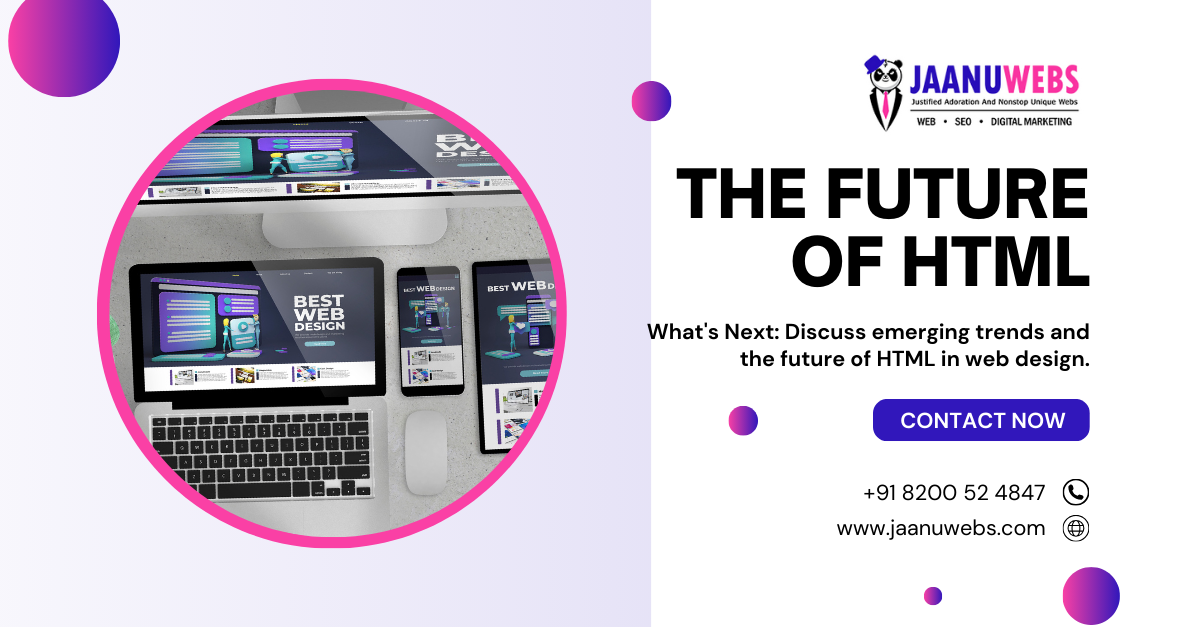HTML: The Unchanging Backbone
HTML has remained the bedrock of the internet since its inception in the early 1990s. Its key role is to structure and present content on the web, and even though the language itself has evolved through versions (HTML5 being the latest), its fundamental purpose remains the same. However, what's exciting is how HTML is adapting to meet the needs of modern web design.
>Semantic HTML:
One of the most significant trends in HTML is the emphasis on semantic coding. HTML5 introduced numerous semantic elements like
Responsive Web Design:
The importance of creating responsive websites has never been greater. HTML5 and CSS3 have made it easier for web designers to create responsive designs. As more users access the web from various devices, responsive design has become essential. Website design services often prioritize this, ensuring seamless user experiences on different screens.
Web Components:
HTML is now becoming more modular. Web components, based on HTML templates and custom elements, allow for the creation of reusable, encapsulated components. This trend not only simplifies web development but also promotes a consistent and maintainable design across a website. Website design services can harness web components to create consistent design elements for clients.
API Integration:
The future of HTML includes better integration with various APIs. This means that web designers can incorporate functionalities like geolocation, push notifications, and offline capabilities directly into web applications. This opens up new avenues for interactive web design, particularly in e-commerce, social networking, and real-time data sharing.
AR and VR Integration:
As augmented reality (AR) and virtual reality (VR) technologies continue to gain traction, HTML is evolving to support these immersive experiences. WebXR, a set of standards for building VR and AR experiences on the web, is becoming more prominent. can leverage these capabilities to create interactive and engaging web applications.
WebAssembly:
WebAssembly (Wasm) is a binary instruction format that enables high-performance execution of code on web browsers. While not part of HTML itself, it's closely related and offers exciting possibilities. Web designers can use Wasm to create fast and feature-rich web applications that rival native apps.
ConclusionThe future of HTML in web design is indeed bright, with emerging trends that promise more interactivity, accessibility, and engaging user experiences. As HTML evolves, so does the role of harnessing its potential. They are tasked with staying updated on the latest developments, incorporating new elements, and ensuring that websites are not just visually appealing but also functional and accessible. With the continuous evolution of HTML, web designers have the tools to shape the digital world and provide users with innovative and engaging web experiences. The future of web design is closely tied to the evolution of HTML, and it's a journey that promises exciting advancements in the years to come.



